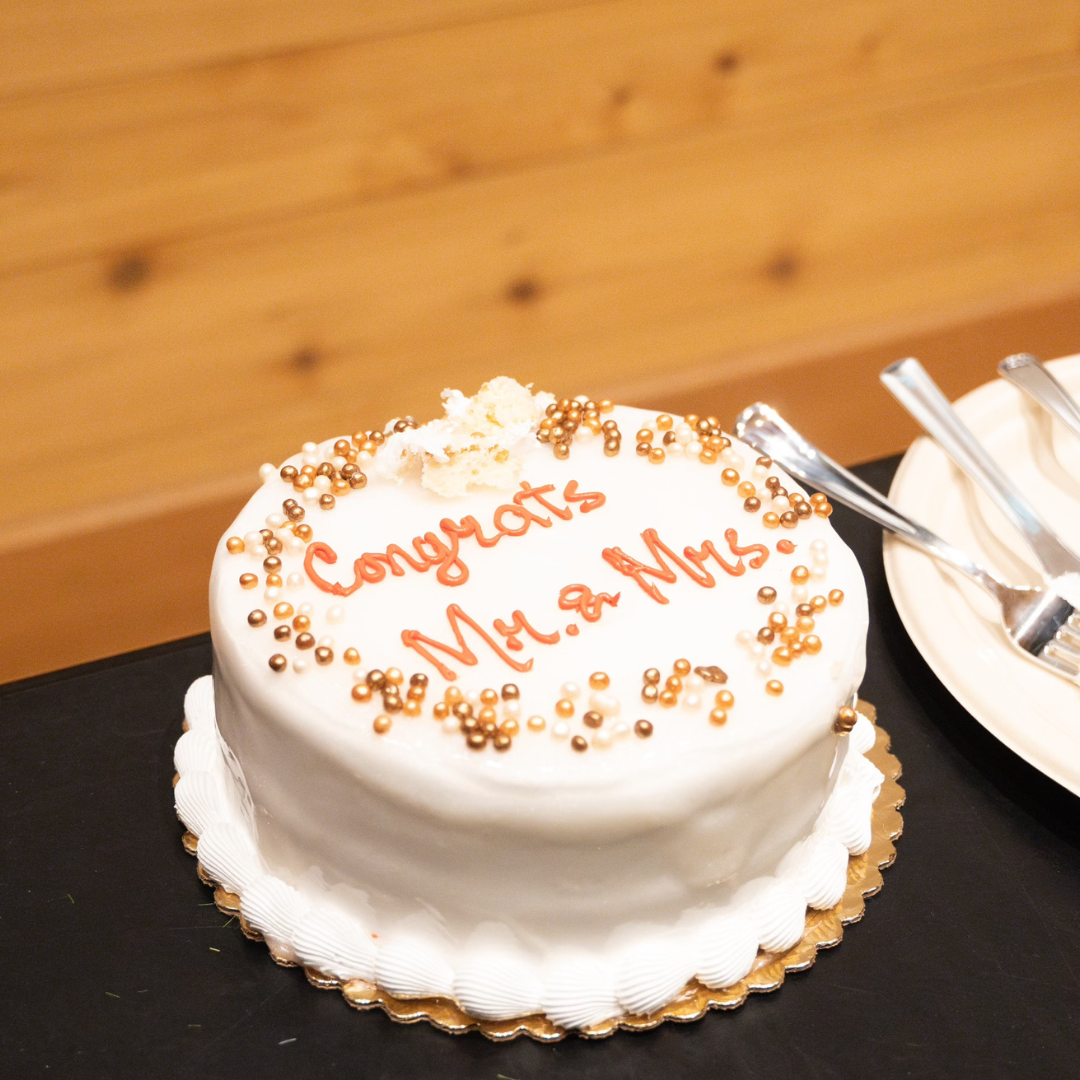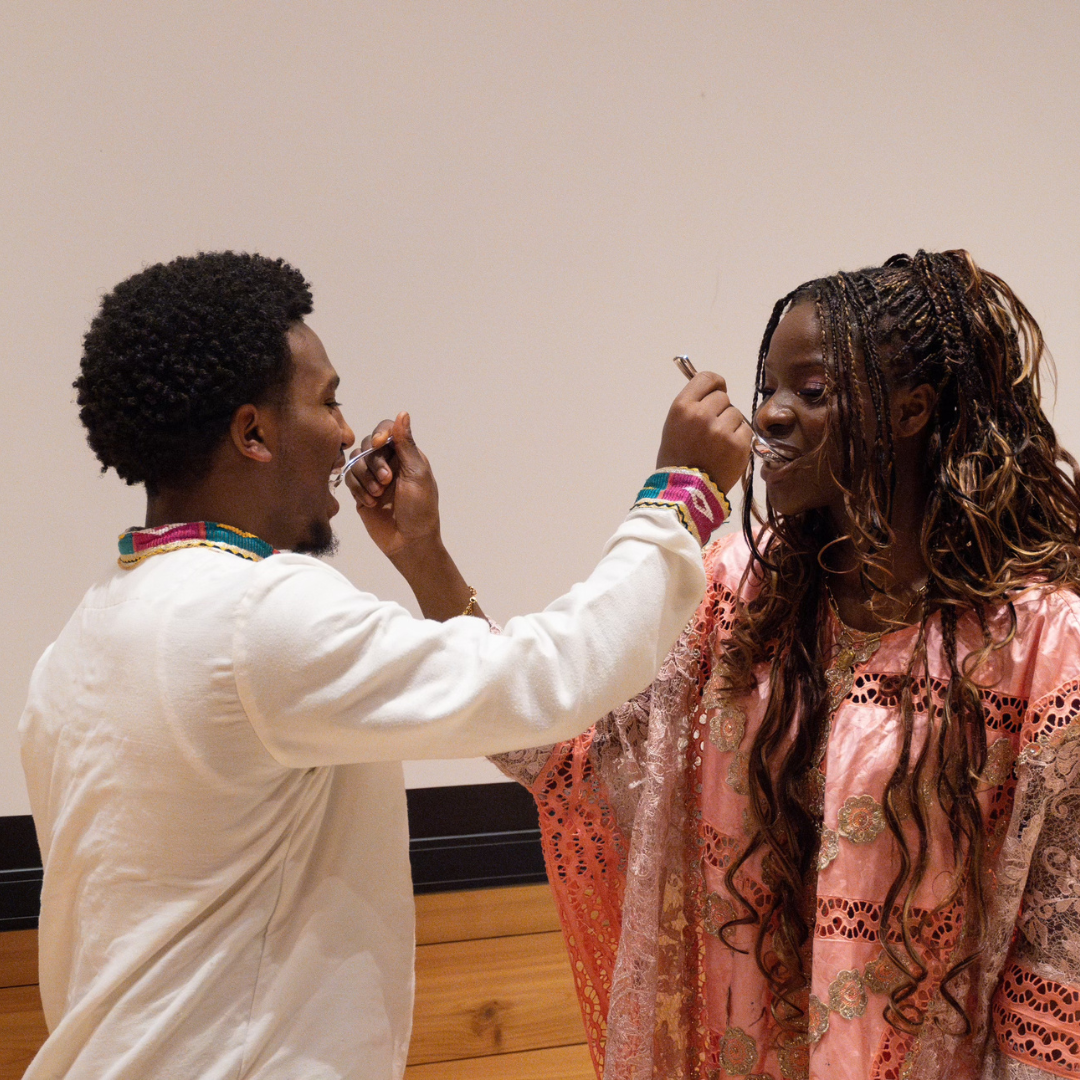
Photo: Briana Oppong-Owusu

Photo: Briana Oppong-Owusu
African Mock Wedding
by Faith Bamba
The Mock African Wedding, hosted on Friday the 8th, by the African Student Association, East African Association, Oromo Student Association, Africans in Medicine, and Black Student Commission, was the first of its kind at the University of Washington Seattle. For a pilot event, the two-to-three-hour program was full of eye-catching and vibrant performance, song and dance. Efforts towards diversity and inclusion were taken as the bride, Kadijatu Konneh, represented Guinea while the groom, Nolawi Woldemariam, represented Ethiopia. My compliments to DJ Daniel Nzanga (ig: youngmatondo), for curating the night’s music and energy, and Rango (ig: rango.ent), for MCing the night. And lastly, thank you to photographer Marwan Mohamed (ig: magnipotent_mo) and our very own Briana Oppong-Owusu (ig:18.ths) for capturing the event.
Poem:
Today we snuck into our parents’ closets and stole their clothes.
We applied their makeup and adopted their voices.
We’d memorized their mannerisms and slipped on their shoes,
each ill-fitting but ours, nonetheless.
Today we became our parents,
and their parents,
and yet we were still children who must sneak out of their homes
in order to gather in darkness.
We were our grandparents,
their grandparents,
and ourselves,
as we stomped to our music and fell into our dances.
When did we memorize these traditions?
How could we ever forget them?
Review:
It wasn’t the chime of wedding bells that seeped out of UW’s Intellectual House on Friday afternoon, but rather the eccentric sound of Afrobeats.
The last time I visited Togo, my father’s home country, was for a wedding. Teetering in heels and a hand-assembled set from that trip, I was immersed in nostalgia from summer 2022. I entered the building and was greeted by countless familiar faces. They were hours into their preparations, but liveliness remained in everyone. Throughout set up, board members from a collection of RSOs flaunted their traditional wear and bounced to the invigorating beat that resonated throughout the building. From the time they began preparations, a vibe had already been set. Whether you were organizing the check-in desk or setting up the buffet, excited conversations were exchanged, reminding each other of the night's program or the order of moves in the dance performance. Perched by the entrance of the Intellectual House, I had prime seating to watch the event unfold.
By 5pm, what was a lonely bench became a front row seat for UW fashion week, the entrance becoming a runway show of its own kind. The doors were flooded with colors and jewels, a parade of fabrics from across the African continent. With a trained eye, you could find representation from Ethiopia, Ghana, Sudan, Somalia, Nigeria, and many more countries; the attendees were enveloped in physical representations of their homes. Like every other African event, there was an unspoken competition to be the best dressed.
As the room started to fill, I excused myself to a table, seated amongst members of the wedding party who were discreetly walking themselves through their moves for the bride and groom’s grand entrance. Around 5:30, Rango, the night’s MC, claimed the stage and started the program. Board leaders from the contributing organizations shared their thanks. From our tables across the Intellectual House ballroom, we awaited dismissal to the buffet, ready to stack our plates high with cuisine from various African regions. We indulged in plantain, jollof rice, veggies, chicken, and Somali rice. One bite would be familiar, another being exhilaratingly new. A welcomed spice from hot sauce connected every piece together.
As plates began to empty, Rango returned to stage to introduce the cultural procession. Through the doorway, students slowly danced their way in, moving to beats from their respective countries. They moved in pairs, charging across the room in clean choreography, with cheers drowning out the music. Once collected at the front, they prepared themselves for the newlyweds who sauntered in with smiles.
The couple led the dance performance at center stage. A multitude of traditions merged into one as the music jumped between tunes. There was a sort of hypnotism to their moves; the audience was entranced in their synchronicity. With the groom leading the final steps, the performers threw their arms in the air and invited the crowd to flood the dance floor. It was an organized chaos I was familiar with, one that felt safe and comfortable. As the DJ moved between different songs, the crowd formed dance circles where people displayed their whining and their footwork. In the heat and tight garments, I found my West African representation through hand fans, ones that were equally for function as they were for accessorizing. This carried on throughout the night, music from different regions giving North, East, Central, and West Africans their moment to shine.
The dancing was dotted with welcomed interruptions; the bouquet toss and cake cutting leaving hordes of people eager to have the best view. Individuals on the outskirts of the crowd chatted amongst themselves, those deeper within the circle becoming a blur of fabric and braids.
Time eluded us and the end of the night was marked with the ceasing of the music. Without an excuse to dance, attendees slowly started to limp out of the building on tired feet. As they collected items and rearranged the space, volunteers and event leadership alike remained smiling, exchanging post-wedding plans and coordinating transportation. Even with over eight hours of labor, their excitement never ceased.
Throughout the program, a standard of unity was set. With the food, the music, and the attendees representing cultures from across Africa, the talented leadership ensured they all connected seamlessly. I applaud ASA, EASA, ASUWBSC, AIM, and OSU for their historic night. In anticipation for next year, I will train my ear for the sound of African music off Little Canoe Channel and excited return back home.
Faith Bamba
BSJ Editor
